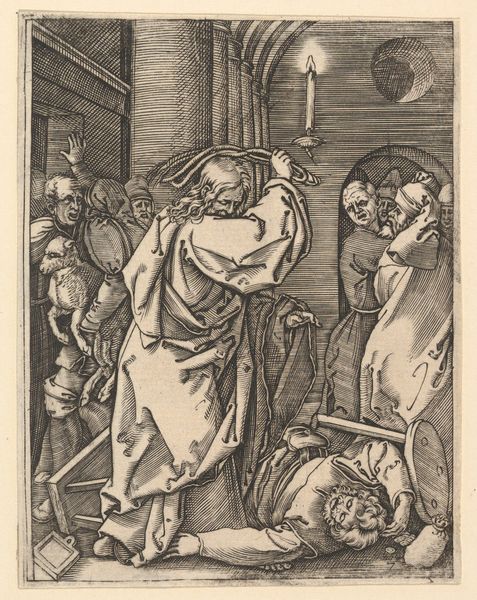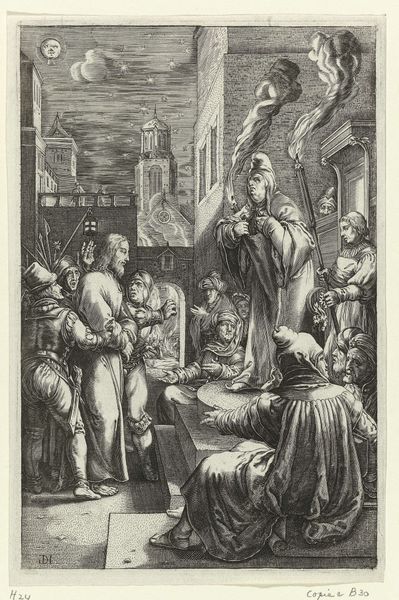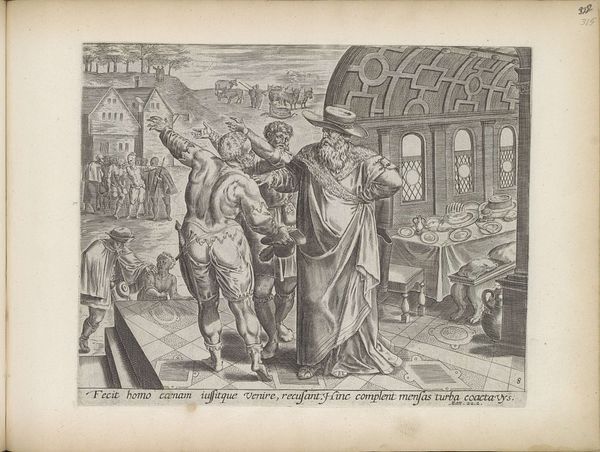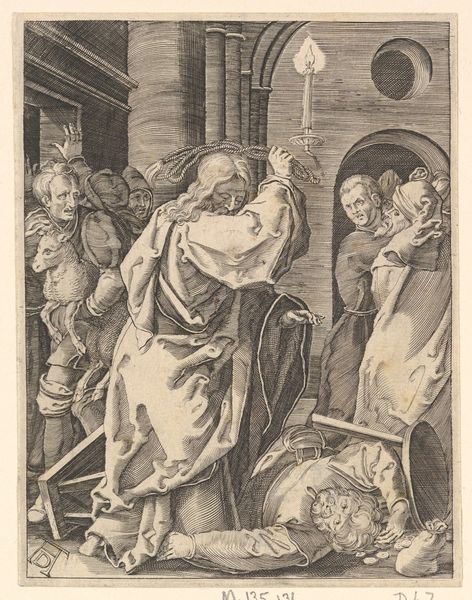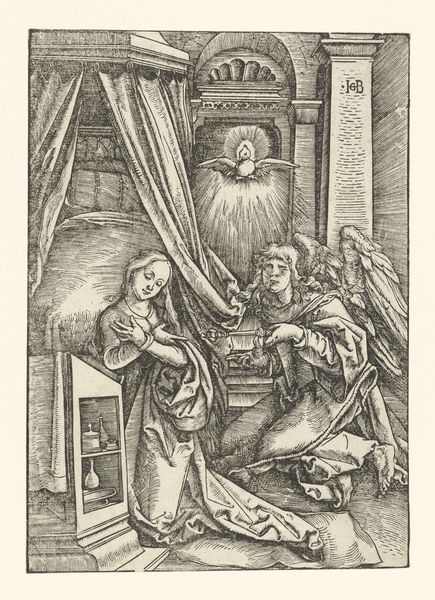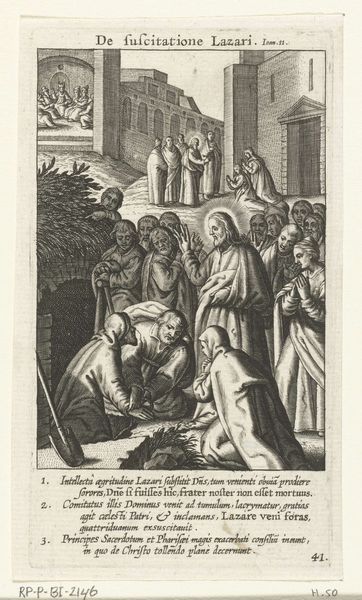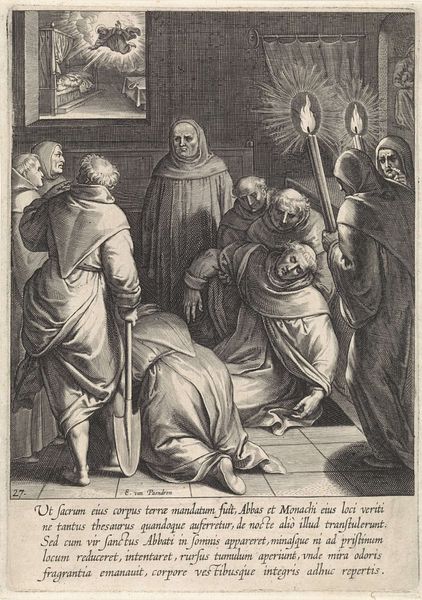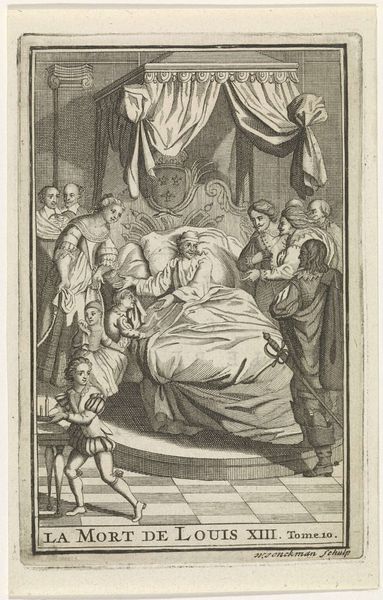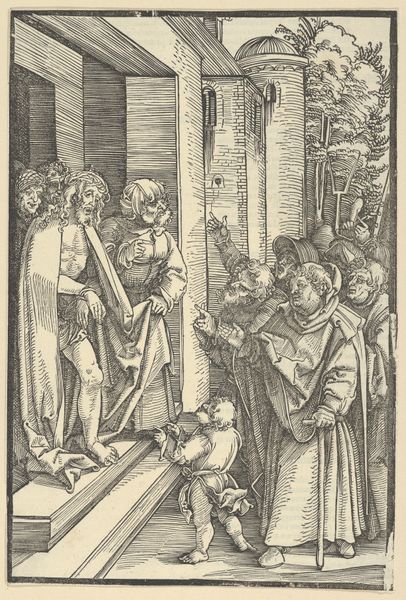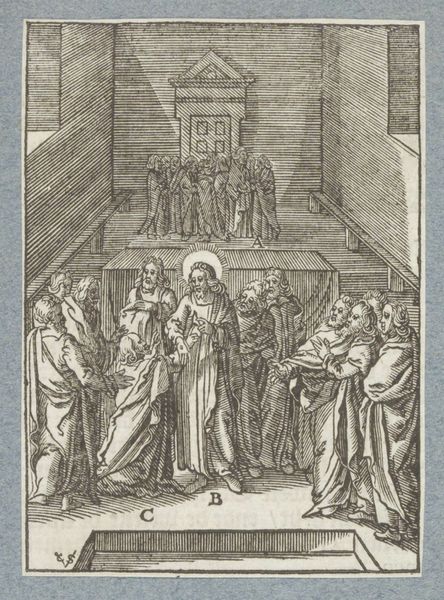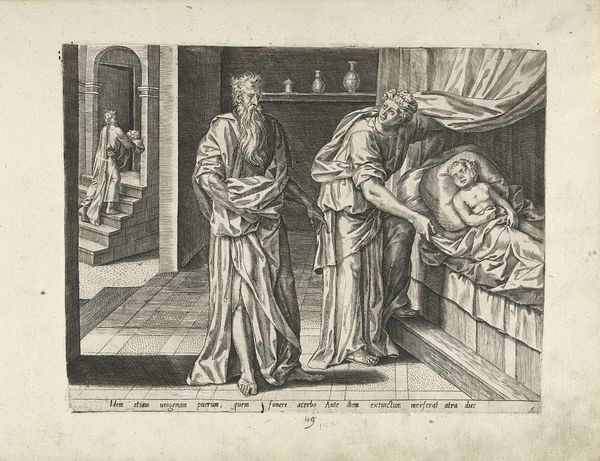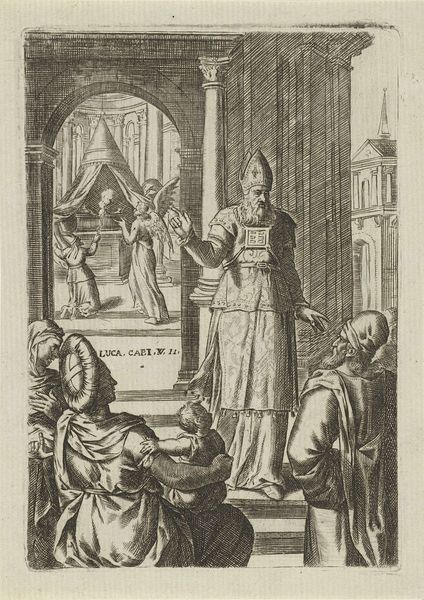
drawing, print, ink, engraving
#
drawing
#
narrative-art
# print
#
figuration
#
ink
#
genre-painting
#
history-painting
#
northern-renaissance
#
engraving
Dimensions: height 233 mm, width 155 mm
Copyright: Rijks Museum: Open Domain
Editor: Here we have Gillis van Breen’s engraving, "Dokter bij een zieke man," created sometime between 1595 and 1610. It's an intricate scene rendered in ink, with a distinctly melancholic feel, showing figures attending a sickbed while death lurks nearby. The contrast between the detailed interior and the grim scene in the background is really striking. What do you make of it? Curator: It’s interesting how the print portrays the theater of early modern medicine, highlighting the complex relationship between belief, social expectation, and the grim realities of the era. Van Breen's choice to depict both the doctor administering care and a skeletal figure in the background underscores the power dynamics at play. Editor: Power dynamics? Curator: Yes, consider the physician's role in that era. They weren't just healers, but also figures of authority, their presence reinforcing social hierarchies, even in the face of death. Note also the verses in different languages beneath the artwork; how do they relate to the scene above? Editor: That’s fascinating. The verses could serve to educate and spread health knowledge within the public sphere, emphasizing how prints helped democratize some aspects of learning. It feels a bit like public health messaging before modern campaigns. Curator: Precisely! Van Breen’s "Dokter bij een zieke man" presents a view of health and illness deeply interwoven with cultural anxieties and societal structures. Does understanding this make you see it in a new light? Editor: Absolutely, seeing it as part of a larger social narrative changes everything. It's not just a historical depiction of illness; it's a comment on the medical practices of the time and its role in society. Curator: Indeed, analyzing its artistic techniques and visual language allows for us to consider broader social and cultural history beyond the artwork. Editor: This has totally changed how I see prints as disseminators of public opinion. Thank you!
Comments
No comments
Be the first to comment and join the conversation on the ultimate creative platform.
